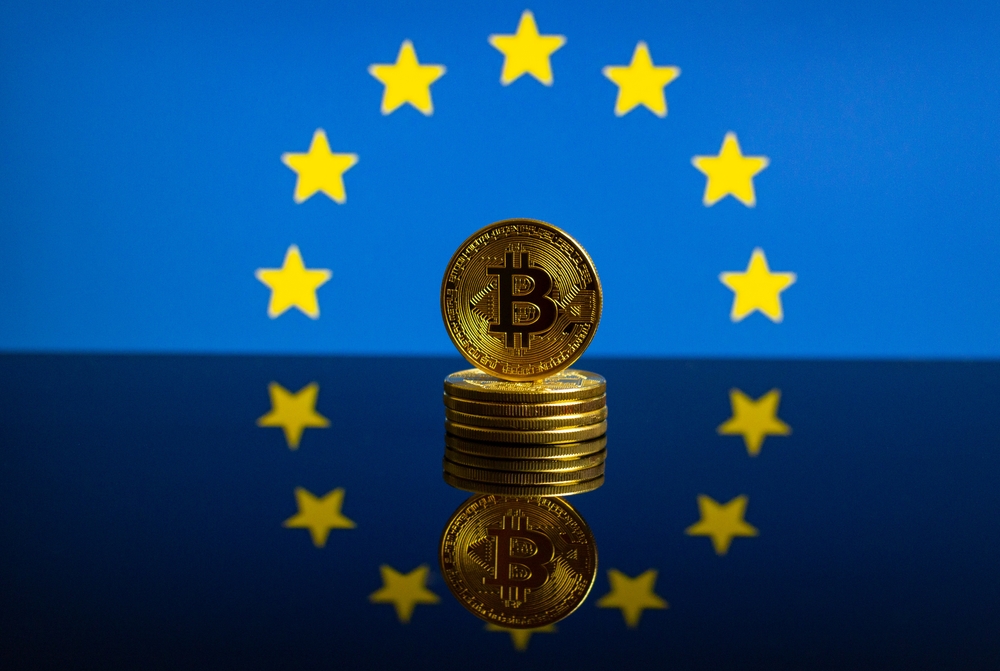The European Union has made history by becoming the first governing body to implement comprehensive regulation for cryptocurrencies. This groundbreaking move aims to standardize the use of digital assets across member nations and lay the foundation for their integration into the mainstream financial system. This article will discuss the background, objectives, and implications of the newly enacted regulations in-depth, as well as explore their potential impact on the global cryptocurrency landscape.
Background and Rationale for Regulation
The rise of cryptocurrencies in the past decade has been accompanied by a surge in illegal activities, including money laundering, tax evasion, and funding of criminal enterprises. Regulators worldwide have been grappling with the challenge of striking the right balance between nurturing the innovative potential of digital assets and safeguarding the financial system from potential risks.
In recent years, the European Union has been at the forefront of this regulatory push. Given the borderless nature of cryptocurrencies, a single, unified regulatory framework within the EU was deemed necessary to ensure the region’s stability, foster innovation, and maintain a level playing field for all stakeholders.
Objectives of the Regulation
The primary objectives of the new regulation include the following:
Enhance transparency: The regulation mandates the disclosure of information by cryptocurrency platforms, service providers, and issuers to ensure that consumers and investors can make informed decisions.
Combat illicit activities: By introducing strict Anti-Money Laundering (AML) and Counter-Terrorist Financing (CTF) measures, the regulation aims to make it harder for criminals to exploit digital assets for nefarious purposes.
Investor protection: The regulation sets standards for digital asset service providers to protect investors from fraud, market manipulation, and other malpractices.
Foster innovation: By creating a unified regulatory environment, the EU hopes to encourage the development of new and innovative digital asset services and products.
Key Features of the Regulation
Some of the most notable features of the new regulation include:
A legal framework for digital asset service providers: The regulation establishes a comprehensive set of rules for companies offering digital asset services such as exchange, custodial wallet services, and issuance of digital assets. These businesses will be required to obtain a license and adhere to strict AML, CTF, and cybersecurity requirements.
Consumer protection measures: The regulation mandates that digital asset service providers maintain adequate capital, safeguard client funds, and implement policies to address conflicts of interest.
Disclosure requirements for issuers of digital assets: Issuers of digital assets, such as initial coin offerings (ICOs) and security token offerings (STOs), will be required to publish a prospectus containing detailed information about the issuer, the digital asset, and the associated risks.
Cooperation among national authorities: The regulation facilitates the exchange of information and cooperation among national authorities responsible for regulating digital asset service providers and issuers, ensuring consistent application of the rules across the EU.
Implications of the Regulation
The new regulation is expected to have significant implications for the European cryptocurrency market, as well as the global digital asset landscape.
Improved market integrity: By establishing clear rules and guidelines for digital asset service providers, the regulation is expected to enhance the credibility of the European digital asset market and make it more attractive for institutional investors.
Industry consolidation: Smaller service providers that cannot meet the new regulatory requirements may be forced to exit the market or merge with larger, more compliant entities, leading to industry consolidation.
Increased competition: With a unified regulatory framework in place, European digital asset service providers will be better positioned to compete with their counterparts in other jurisdictions that lack such comprehensive regulations.
Innovation and growth: A clear and predictable regulatory environment is likely to encourage investment in the development of new digital asset services and products, leading to greater innovation and growth within the European digital asset ecosystem. Companies and startups can benefit from the legal certainty provided by the regulation, allowing them to focus on research, development, and collaboration without the fear of unexpected regulatory changes.
Global influence: As the first-ever comprehensive cryptocurrency regulation, the European framework could serve as a model for other jurisdictions looking to develop their own regulatory approaches. This could lead to a more harmonized global regulatory environment, reducing the current regulatory arbitrage opportunities and fostering increased international collaboration.
Enhanced consumer and investor trust: By implementing robust consumer protection measures and requiring transparency from issuers and service providers, the new regulation aims to restore trust in the digital asset market. This could lead to greater adoption of digital assets among retail and institutional investors alike.
Potential Challenges and Criticisms
Despite the potential benefits, the new regulation also faces challenges and criticisms:
Implementation hurdles: The successful implementation of the regulation will depend on the ability of national authorities to effectively enforce the rules and coordinate with their counterparts in other member states. This could prove challenging, given the decentralized and borderless nature of digital assets.
Over-regulation: Some critics argue that the regulation may be too restrictive and stifle innovation in the digital asset space. They contend that the high compliance costs associated with the new rules could drive startups and smaller businesses out of the market, leading to reduced competition and innovation.
Regulatory arbitrage: While the regulation aims to create a level playing field within the EU, there is still a risk of regulatory arbitrage as businesses may choose to operate in jurisdictions with more lenient regulations. This could potentially undermine the effectiveness of the European regulatory framework.
Technological advancements: The rapid pace of innovation in the digital asset space may pose challenges for regulators to keep up with new developments. The regulation may need to be updated periodically to address emerging trends and technologies.
Conclusion
The implementation of the first-ever comprehensive regulation for cryptocurrencies in Europe marks a significant milestone in the evolution of the digital asset market. The new framework aims to provide a stable and predictable environment for businesses, investors, and consumers, while addressing the challenges posed by the growing use of digital assets in the global financial system.
Although the regulation is not without its challenges and criticisms, it represents an important step towards the mainstream adoption of cryptocurrencies and other digital assets. By setting a precedent for other jurisdictions to follow, the European Union’s regulatory approach could play a crucial role in shaping the future of the global digital asset landscape.






